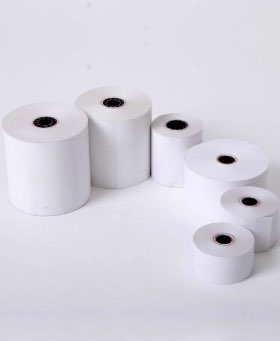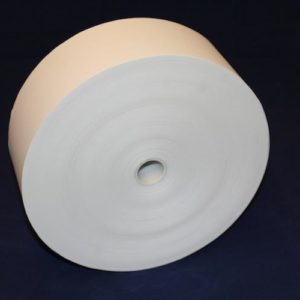
Hidden Facts And Benefits About BPA-free Thermal Paper
After a visit to the gas station, grocery store, or your favorite restaurant, you will probably end up with a receipt of the transaction. But, have you ever paused and thought about the receipt, asked where it came from and where it will end up?
For instance, did you know that there’s more BPA in a thermal receipt than from a polycarbonate water bottle leaching BPA after being used for many years? Keep reading for more insights on BPA-free thermal paper and why you should be using it.
What is BPA in receipt Paper?
Thermal Paper is that narrow, shiny, smooth special paper you use to print receipts, such as ATMs, grocery stores, and gas station receipts. Unlike conventional Paper, a thermal printer produces heat, leading to printed text and images.
When you subject thermal Paper to heat, it triggers a chemical reaction on its top coating consisting of leuco dye and color developer, causing the pictures and writing. Using BPA thermal paper allows for inkless printing.
What is BPS in Thermal Paper?
As you’ve just seen in the paragraph above, manufacturers use leuco dye and a color developer as the top coating of thermal Paper. The two components react to form text images. In some instances, a thermal paper manufacturer may swap the color developers. Instead of using BPA, they would opt for BPS.
Because BPA has been getting some bad press, using BPS allows them to produce BPA-free thermal Paper. Early EPA analysis suggested BPS is less toxic to humans and aquatic life than BPA, hence better for the environment.
Why is BPA used in thermal paper?
Most manufacturers use BPA as the color developer because of its relative heat resistance. It can withstand room temperatures but will melt before you burn the Paper. In addition, it is the main component used for color development.
Further, dyes are often unstable, so the BPA also doubles up as the stabilizer. Finally, since BPA is widely used, it is a cheap raw material.
Pros and Cons of BPA free thermal paper
Pros of BPA free thermal paper
- It does not pose the same health risk concerns as thermal Paper with BPA, such as diabetes and sexual health issues
- It is eco-friendly as it does not leach the harmful BPA, harming aquatic, water, and food sources.
- You can recycle it, unlike BPA paper that can contaminate the other Paper in the recycling cycle.
Cons:
- The most common alternative is BPS and BPF thermal paper. While they have a BPA-free classification, they are still phenols and could cause the same effects as BPA, just less potent.
- Thermal paper is slightly more expensive, especially if you opt for BPA Free thermal paper. But there are some other facts about thermal paper you should know to get the best quality thermal paper.
Is BPA in the thermal Paper a health risk?
Some believe BPA poses a significant health risk that federal and state governments have banned its use in children’s and plastic items. However, like most studies there are those who found BPA was not a definitive link to health issues. Studies show it may cause health issues such as:
- Behavior change
- Prostate glands of fetuses and children
- There is a link between cancer, diabetes, cardiovascular diseases, and high blood pressure.
That said, a study by Springer-Verlag established that anyone handling BPA thermal receipt for extended periods gets exposed to 71 micrograms of BPA, which happens to be at least 42 times less than the daily intake your body can safely tolerate.
The FDA has conducted extensive research and concluded that BPA exposure to humans through receipts and other food packaging is too low to pose a health risk.
While these findings are reassuring, BPA is still a harmful chemical. Therefore, it won’t hurt to assure clients and employees that you value their health by purchasing BPA-free thermal paper.
Is thermal receipt Paper recyclable?
Because most thermal Paper contains BPA, some argue that you can’t recycle it. However, recent advances in the manufacturing process led to the production of phenol-free Paper, which is safe for humans to handle and environmentally friendly. Additionally, it’s made of small amounts of recycled paper. That means you can recycle it with the other mixed office paper without further special handling.
What are the alternatives of thermal Paper containing BPA?
The most widespread alternative to BPA is Bisphenol S (BPS), but there are a few instances of Bisphenol F (BPF) used in thermal receipts in countries such as France, Brazil, and Spain. These have BPA-free thermal paper categorization.
While the two above do not contain BPA, they contain phenol chemicals. As a result, they have the same effect on the environment, only less potent. Manufacturers are thus turning to phenol-free, environmentally friendly alternatives, such as urea and Vitamin C.
Also Read: Square Receipt Paper – Types and Benefits
How to choose the best BPA-free receipt paper?
You should request your supplier to send you BPA-free paper. Ensure the packaging has “BPA free thermal paper” labeling. For the best BPA-free receipts, look for one made without any phenol chemicals and is customizable with your branding.
Price: GTS BPA-free paper starts from a low as $15.99 per carton
Brand: Graphic Tickets & Systems is the leading brand for BPA-free thermal paper, be it ATM, pay station, or POS receipt papers.
Features: phenol-free Paper that will fit the thermal printer, and which you can place marketing information

















